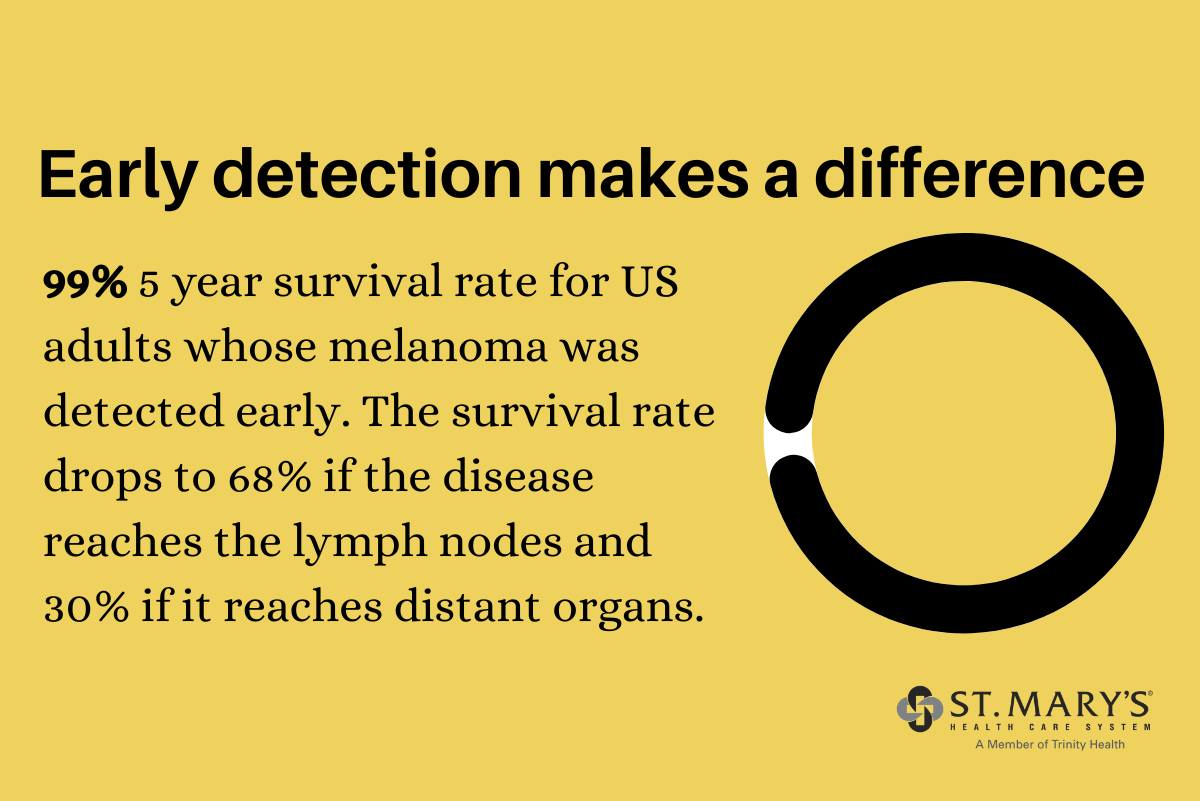Mole or Skin Cancer? Knowing the ABCDE Rule
May 11, 2023It is important to understand the early signs of skin cancer.
Melanoma is a type of skin cancer that is particularly dangerous because it can spread to other parts of the body. Identifying it early is important in increasing your chances for successful treatment.
Exposure to ultraviolet (UV) light from the sun or sources such as tanning beds is the leading cause of melanoma, but it can arise anywhere on the body. Look for moles or spots that are new, changing, or different on both sun-exposed and sun-protected areas of the skin. In women, melanoma is most common on the legs. For men, the trunk is the most common area for melanoma to develop.
Most moles, brown spots, and growths on the skin are harmless, but some can be cancerous. The ABCDE rule and “Spotting the Ugly Duckling” can help you identify possible melanoma – and know when to see a doctor.
The ABCDEs of Melanoma
A is for Asymmetry. If you draw a line down the middle of a lesion and the two halves do not match, this could be a sign of melanoma.
B is for Border. The borders tend to be uneven and could have scalloped or notched edges.
C is for Color. Multiple colors are a warning sign. A melanoma may have different shades of brown, tan, or black. As it grows, red, white, or blue may appear.
D is for Diameter or Dark. If the lesion is the size of a pencil eraser or larger, it could be melanoma. Some sources say it is important to examine lesions that are darker than others, even if they are small.
E is for Evolving. Any change in size, shape, color, or elevation can be a warning sign of melanoma.
Spotting the Ugly Duckling
The Ugly Duckling is another warning sign of melanoma. Most normal moles typically look like other moles. In contrast, melanomas tend to stand out because they look different. The “ugly duckling” lesions may be larger, smaller, lighter, or darker in comparison to other nearby moles.
What You Can Do
Protect Yourself
Experts agree that exposure to the sun’s harmful ultraviolet rays is a leading cause of melanoma. The risk is highest for fair-skinned people who tend to burn rather than tan, but melanoma is possible in people with dark skin tones, too. Use a high-quality sunscreen, SPF 30 or above, and reapply frequently. A wide-brimmed hat, long pants and long sleeves are especially effective at blocking UV light. Avoid tanning beds, which also use UV radiation.
Examine Yourself
It is important to examine your skin head-to-toe for any potential skin cancer signs. If you have any existing moles or lesions, take continuous note of their appearance. Don’t forget to check your back! You will need another person or mirrors to help with this.
When in doubt, check it out
Schedule a visit with your doctor if you find a spot that does not look or feel right. Melanomas can be dangerous as they progress, so it is important to detect and treat them at their earliest stages. Ask your primary care provider (PCP) about doing an annual skin check, or visit a dermatologist at least one a year. Be sure to check your insurance plan to see if you need a referral from a PCP before receiving care from a dermatologist.

